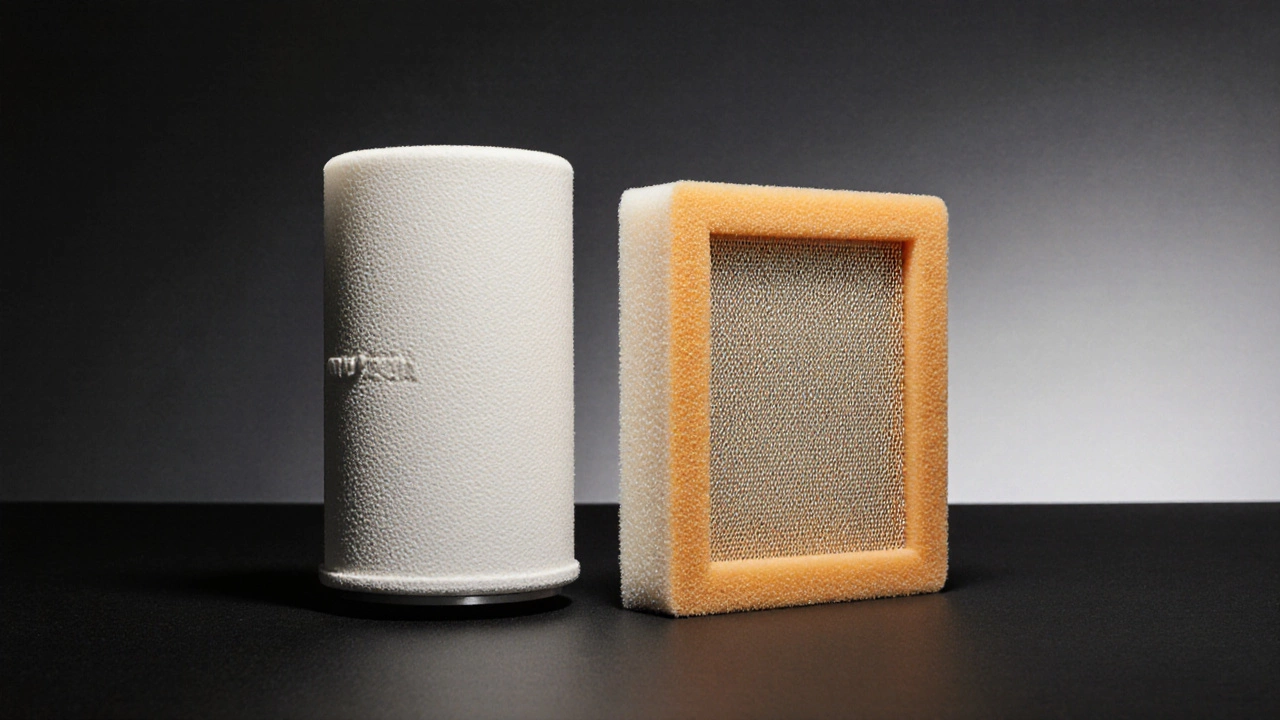Expensive Car Air Filters: Are They Worth the Money?
- Gareth Westbrook
- 13 10 2025 Performance Parts
Explore if pricey high‑flow car air filters deliver real performance, fuel‑economy, and durability benefits, and learn when they’re worth the upgrade.
When evaluating the air filter cost benefit, the financial trade‑off between upfront price, performance gain, and long‑term upkeep of an engine air filter. Also known as air filter ROI, it helps you decide whether a pricier filter really pays off in fuel savings or power boosts.
A performance air filter, designed to increase airflow while maintaining filtration efficiency often promises more horsepower and a slight fuel‑efficiency bump. The benefit equation works like this: higher airflow reduces intake resistance, which can free up a few extra kilowatts. However, the actual cost benefit depends on how often you replace the filter and whether your driving style extracts that extra power.
When you compare a performance filter to a stock unit, you’re looking at a classic cost‑benefit trade: a higher upfront cost versus potential gains in power and slightly better MPG. For daily commuters, the marginal power gain might not justify the expense, but track enthusiasts often see the investment as worthwhile.
Another key player is the dry air filter, a filter made from rigid paper or foam that doesn’t require oil. Dry filters are cheap, easy to replace, and clean without extra mess. Their cost benefit shines in high‑maintenance scenarios where you swap filters often; you avoid the recurring expense of oil and the extra labor.
In contrast, an oiled air filter, a reusable filter coated with oil to trap finer particles can last months longer than a dry version. The oil catches dust that would otherwise bypass the filter, extending lifespan and potentially lowering long‑term costs. The downside is the need for periodic cleaning and re‑oiling, which adds time and a small material cost.
Understanding the air filter lifespan is essential for a real cost‑benefit analysis. A high‑flow performance filter might need replacement every 12,000‑15,000 miles, while a quality oiled filter could stretch to 20,000 miles or more. Longer intervals mean fewer purchases, but the individual price tag is higher. Calculating total ownership cost—price per filter divided by mileage—gives a clear picture of which option saves you money in the long run.
Engine performance, fuel efficiency, and maintenance frequency all intersect in the cost‑benefit matrix. If you install a performance filter, you should also check the cold‑air intake compatibility and whether a tune is required; an untuned setup can negate the expected gains and waste money. On the other hand, a well‑maintained oiled filter can provide decent airflow without any ECU adjustments, offering a balanced middle ground.
In summary, the best choice hinges on your driving habits, budget, and willingness to perform routine maintenance. Below you’ll find a curated set of articles that dive deeper into each filter type, compare costs, explain lifespan factors, and show real‑world numbers so you can make an informed decision.

Explore if pricey high‑flow car air filters deliver real performance, fuel‑economy, and durability benefits, and learn when they’re worth the upgrade.